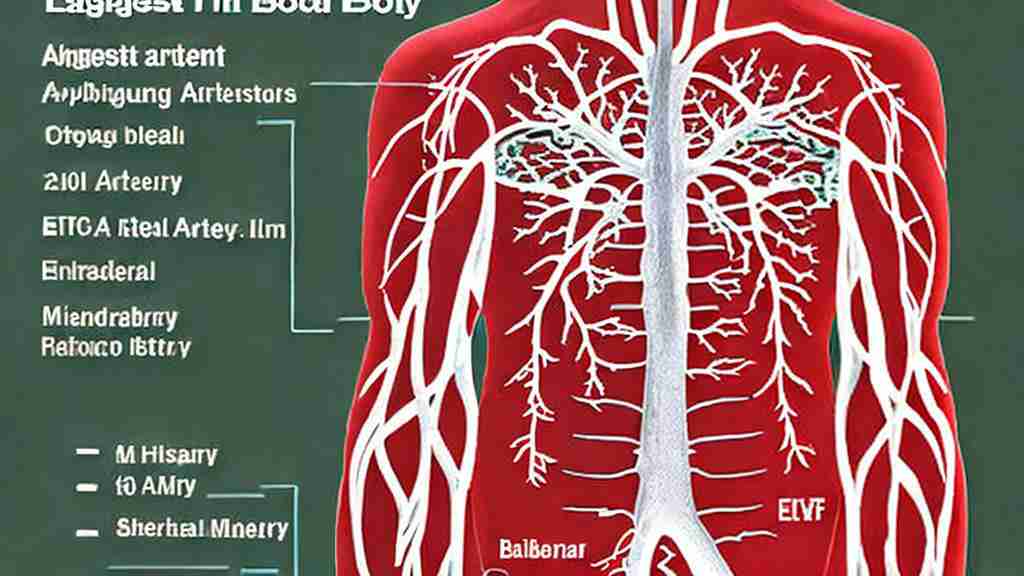The artery is the biggest artery in your body and it’s one of the most important organs and structures in your body. These vital components work together to maintain life. In addition to maintaining proper circulation, the aorta also supplies oxygenated blood to the body’s various organs. The purpose of this article is to provide an overview of the importance of the largest artery in the body, as well as discuss its functions, structure, and health implications.
Understanding Arteries & Circulatory System
We need to understand the fundamentals of the circulatory system before we can comprehend the importance of the largest artery in the body. Oxygen, nutrients, hormones, and waste products are transported throughout the body by the circulatory system, which includes the heart, blood vessels, and blood. In order for oxygenated blood to reach various organs and tissues, it must travel through arteries.
An Overview of the Artery
It extends upward, arches over the heart, and then descends through the chest and abdomen. The aorta is the biggest artery in the body. It’s located in the left heart chamber. There are four different segments of the ascending aorta: the aortic arch, the descending thoracic aorta, and the abdominal aorta.
The Structure of the Artery
There are three layers to the aorta: the inner, outer, and middle layers. Intima is the inner layer and media is the middle layer. With these layers, the aorta is strong and flexible, enabling it to withstand the forceful pumping of blood by the heart.
Functions of the Artery
It is the aorta’s primary function to deliver oxygen-rich blood throughout the body. Providing oxygen and nutrients to cells, organs, and tissues is its primary function, as it is the main conduit that carries blood away from the heart. In addition to controlling blood pressure, the aorta expands and contracts to accommodate the heart’s surges of blood.
Importance of Proper Aortic Functioning
In order to maintain overall cardiovascular health, a healthy aorta is vital. A healthy aorta facilitates efficient blood flow, allowing various organs to function optimally. As a result of its elasticity, the aorta reduces the amount of strain on the heart and blood vessels by absorbing the force generated by the heart’s contractions.
Common Aortic Disorders
Aorta health and function can be affected by several conditions. A few common disorders include:
- Aortic Aneurysm: Untreated, this can lead to a potentially life-threatening rupture of the aorta due to abnormal dilation or ballooning.
- Aortic Dissection: Aortic rupture happens when there’s a hole in the inner layer of the heart, which causes blood to flow between the layers.
- Aortic Stenosis: The aortic valve narrows, resulting in impedance of blood flow from the heart to the aorta.
- Atherosclerosis: There are several complications that may occur if plaque builds up within the aorta.
Tips for Maintaining Aortic Health
To promote a healthy aorta and overall cardiovascular well-being, consider the following tips:
- Eliminate too much saturated and trans fat in your food while making sure you’re getting plenty of fresh fruit, veggies, whole grains and lean protein.
- Regular physical activity is essential for maintaining a healthy weight and promoting proper blood circulation.
- The best way to prevent aortic diseases is to quit smoking and drink less alcohol.
- Relax your body and mind by engaging in activities that promote deep breathing or meditation.
- If you have high blood pressure or high cholesterol, it’s important to keep an eye on it and seek medical help if you notice any changes.
Conclusion
Aortas are the largest arteries in the body. They carry oxygenated blood throughout the body, making sure it reaches all organs and tissues on time. It is important to understand the importance of the aorta and to take steps to preserve its health in order to maintain an overall healthy cardiovascular system.
FAQs
Q: Is the aorta the same as an artery?
A: No, the aorta is an artery, but it is the largest artery in the body and has a crucial role in distributing blood to various organs and tissues.
Q: Can a damaged aorta be repaired?
A: In some cases, surgical interventions can repair or replace damaged segments of the aorta, depending on the specific condition and its severity.
Q: Are there any symptoms of aortic disorders?
A: Symptoms can vary depending on the specific disorder, but common signs include chest or back pain, difficulty breathing, and abnormal heartbeat.
Q: Can lifestyle changes improve aortic health?
A: Yes, adopting a healthy lifestyle that includes a balanced diet, regular exercise, and avoiding smoking can significantly improve aortic health.
Q: Are aortic disorders hereditary?
A: While some aortic disorders have a genetic component, lifestyle factors and other environmental factors also play a significant role in their development. It is important to consult with a healthcare professional to assess individual risks and take appropriate measures.

